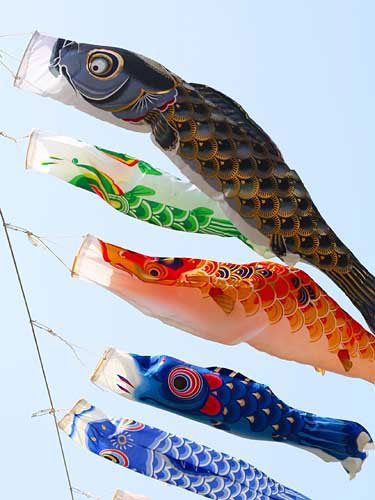Jill Engledow
 Ever wonder why, each spring, colorful, fish-shaped streamers fly outside some island homes? They’re part of the celebration of Boys’ Day, a Japanese holiday that arrived in the Islands with early plantation workers. The streamers, or koi-nobori, symbolize strength, determination and longevity—qualities found in the carp that swims upstream against powerful currents—and represent proud parents’ hopes for their growing sons. And so, for this May 5 holiday, Maui families of Japanese ancestry erect a pole with a flag for each son, with the largest at the top for the eldest, and so on down to the smallest baby boy.
Ever wonder why, each spring, colorful, fish-shaped streamers fly outside some island homes? They’re part of the celebration of Boys’ Day, a Japanese holiday that arrived in the Islands with early plantation workers. The streamers, or koi-nobori, symbolize strength, determination and longevity—qualities found in the carp that swims upstream against powerful currents—and represent proud parents’ hopes for their growing sons. And so, for this May 5 holiday, Maui families of Japanese ancestry erect a pole with a flag for each son, with the largest at the top for the eldest, and so on down to the smallest baby boy.
The flags are the most publicly visible image on a day filled with symbolism. Inside a traditional home, Boys’ Day is celebrated with elaborate dolls and special foods. The dolls, dressed as samurai warriors and legendary heroes, remind boys to be brave and manly. Sweet rice cakes known as kashiwa-mochi may be wrapped in sword-shaped iris leaves. The iris is associated with Boys’ Day partly because the holiday evolved from the Shinto iris festival, Shobu-no-sekku. The word shobu, or “iris,” also means “striving for success,” a characteristic parents around the world would wish for their sons. And those sword-shaped leaves make handy stand-ins for weapons in the mock battles so beloved by little boys.





